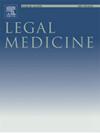加强ecmo相关形态学改变的检测:一项死后观察研究和系统综述。
IF 1.4
4区 医学
Q3 MEDICINE, LEGAL
引用次数: 0
摘要
体外膜氧合(Extracorporeal Membrane Oxygenation, ECMO)是重症监护医学中对常规治疗无效的严重心肺衰竭患者至关重要的生命支持技术。虽然ECMO可以挽救生命,但它是一个复杂的过程,需要多学科的方法和对其适应症、禁忌症、并发症和局限性的全面了解。ECMO的应用也给法医学带来了重大挑战,因为接受ECMO并随后死亡的患者可能会表现出生理变化,从而导致死前和死后诊断之间的差异。这些变化可能使尸检结果的解释复杂化,并影响法医结论。“据报道,一项系统综述和8例病例研究处理了经体外膜肺氧合治疗后死亡的患者”。每个病例都进行了法医尸检,以说明与ECMO相关的潜在死后变化,并强调在评估法医病例时了解这些影响的重要性。作者建议在开始ECMO治疗前或在治疗的最初几个小时内进行外部检查,以记录和保存法医感兴趣的病例的临床状况。该方法旨在为法医分析提供更清晰、更准确的基础,确保在尸检过程中妥善考虑ECMO造成的任何改变。本文章由计算机程序翻译,如有差异,请以英文原文为准。
Enhancing the detection of ECMO-related morphological changes: a post-mortem observational study and systematic review
Extracorporeal Membrane Oxygenation (ECMO) is a crucial life-support technology used in intensive care medicine for patients with severe cardiorespiratory failure who do not respond to conventional treatments. While ECMO can be lifesaving, it is a complex procedure that demands a multidisciplinary approach and a thorough understanding of its indications, contraindications, complications, and limitations. The application of ECMO also presents significant challenges for forensic medicine, as patients who undergo ECMO and later die may exhibit physiological changes that can lead to discrepancies between pre-mortem and post-mortem diagnoses. These changes can complicate the interpretation of autopsy findings and impact forensic conclusions. “A systematic review along with eight cases studies dealing with patients died after treatment with ECMO have been reported”. Each case underwent forensic autopsy to illustrate the potential post-mortem changes associated with ECMO and highlight the importance of understanding these effects when evaluating forensic cases. The authors propose a procedure for conducting an external examination before initiating ECMO treatment or during the initial hours of treatment to document and preserve the clinical condition in cases of forensic interest. This approach aims to provide a clearer and more accurate basis for forensic analysis, ensuring that any alterations due to ECMO are properly accounted for during autopsy.
求助全文
通过发布文献求助,成功后即可免费获取论文全文。
去求助
来源期刊

Legal Medicine
Nursing-Issues, Ethics and Legal Aspects
CiteScore
2.80
自引率
6.70%
发文量
119
审稿时长
7.9 weeks
期刊介绍:
Legal Medicine provides an international forum for the publication of original articles, reviews and correspondence on subjects that cover practical and theoretical areas of interest relating to the wide range of legal medicine.
Subjects covered include forensic pathology, toxicology, odontology, anthropology, criminalistics, immunochemistry, hemogenetics and forensic aspects of biological science with emphasis on DNA analysis and molecular biology. Submissions dealing with medicolegal problems such as malpractice, insurance, child abuse or ethics in medical practice are also acceptable.
 求助内容:
求助内容: 应助结果提醒方式:
应助结果提醒方式:


